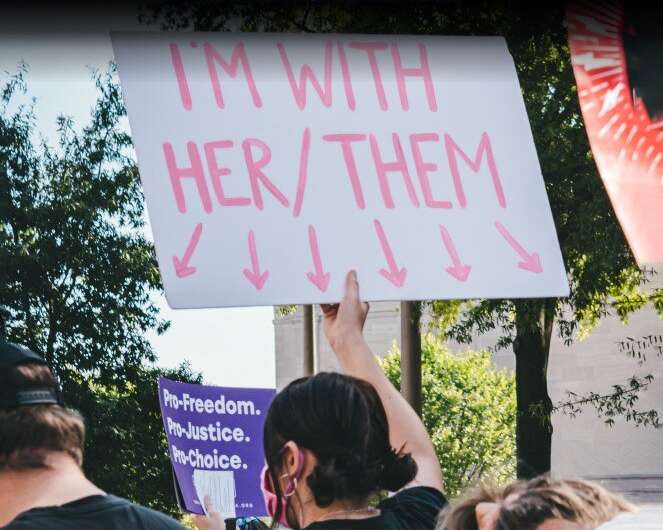
Nearly half of childbearing-age Latinas in the U.S. currently live in states that ban or restrict abortions, UCLA researchers report, and the percentage of Latinas of childbearing age in each of those states is significantly higher than among their white counterparts.
The findings, from a study released today by the UCLA Latino Policy and Politics Institute, highlight the challenging post–Dobbs v. Jackson reality for Latinas, who as a group already face heightened barriers in accessing health care and now face an increased risk of unwanted pregnancies and maternal mortality.
“Abortion bans have an outsized impact on our community, threatening the health and well-being of Latinas,” said Sonja Diaz, founding director of the institute. “Our data makes clear that Latinas must be at the forefront of policy discussions on reproductive justice and health care reform. Our leaders cannot stand idly by and wait for the impacts of Dobbs to ravage America’s youthful and diverse communities of color.”
Approximately 5.1 million Latinas—46% of the Latina population between the ages of 18 and 44—reside in the 29 states that restrict the reproductive rights of women. Their percentage has increased substantially over the past decade as a result of overall Latino population growth and the movement of Latinos into areas of the South and Midwest with historically sparse Latino communities, the researchers said.
In North Dakota, for instance, the population of Latinas of childbearing age grew by 136% between 2010 and 2019, while in Texas, long a Latino stronghold, the population of childbearing-age Latinas jumped by 21%. On the whole, states that have seen the highest growth rates of Latinas of childbearing age are also states that have abortion restrictions.
An outsized impact on Latinas
Although roughly 60% of non-Hispanic white women of childbearing age live in abortion-restrictive states, Latinas in each of those states are far more likely to be of childbearing age than white women, the study shows. In the 29 states that ban or restrict abortions, the proportion of Latinas who are of childbearing age ranges from 49% to 77%, compared with 31% to 52% of white women. In Alabama, for example, 67% of Latinas are between the ages of 18 and 44, versus 38% of white women. In North Dakota, those figures are 77% and 44%, respectively.
The study findings demonstrate that the potentially harmful impacts of the Dobbs ruling are likely to disproportionately affect Latinas, who will face challenges finding proper reproductive care and increased financial burdens if travel is required to states with greater access to reproductive health services, the authors said. The current research, they noted, builds on existing work showing that Latinas and other women of color already have higher rates of abortion while also facing barriers in accessing health care.
The researchers recommend that policymakers take the following actions to help limit the impact of the Dobbs decision on Latinas:
- Fully adopting Medicaid expansion in their states to ensure access to adequate medical services and maternal and child health care.
- Increasing funding for community-based clinics and state hospitals, particularly in non-restrictive states, to accommodate women who may travel to access reproductive health services.
- Enacting prohibitions on false and misleading advertising for reproductive health services.
“The Dobbs decision exposed and aggravated existing health and health care disparities faced by Latinx communities,” said Josefina Flores Morales, one of the report’s authors. “Our findings suggest Latinas will be most impacted by threats to their reproductive rights at a pivotal time in their lives, which can create lasting economic setbacks. To minimize harm, policymakers must take urgent action to implement policy solutions.”
Source: Read Full Article



